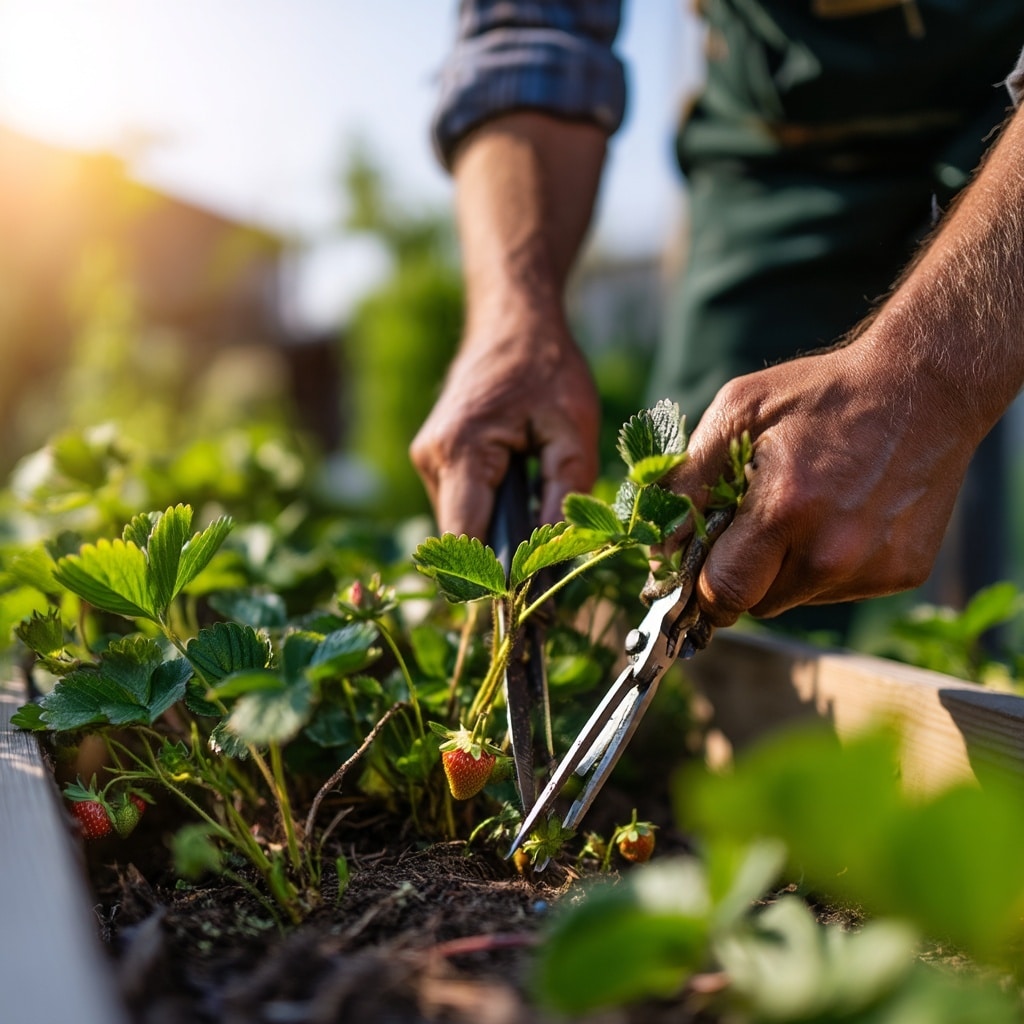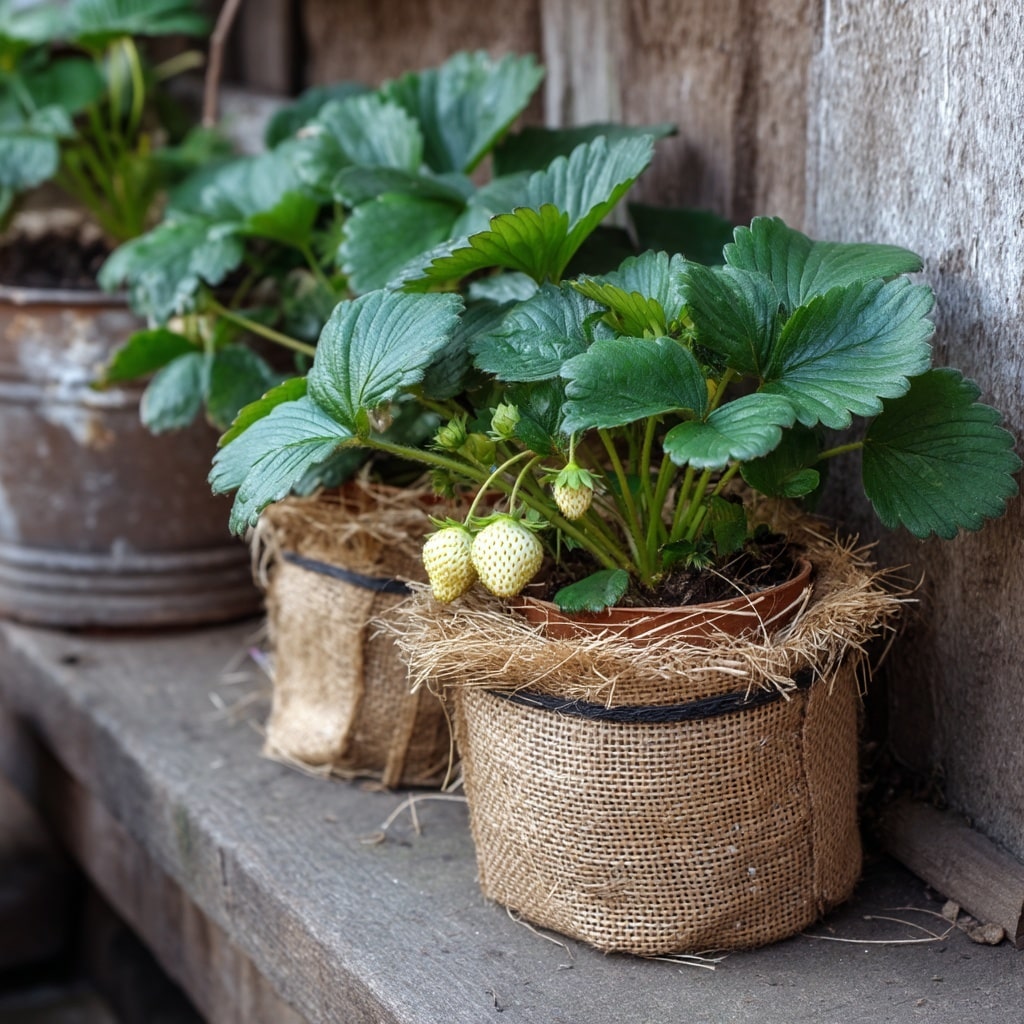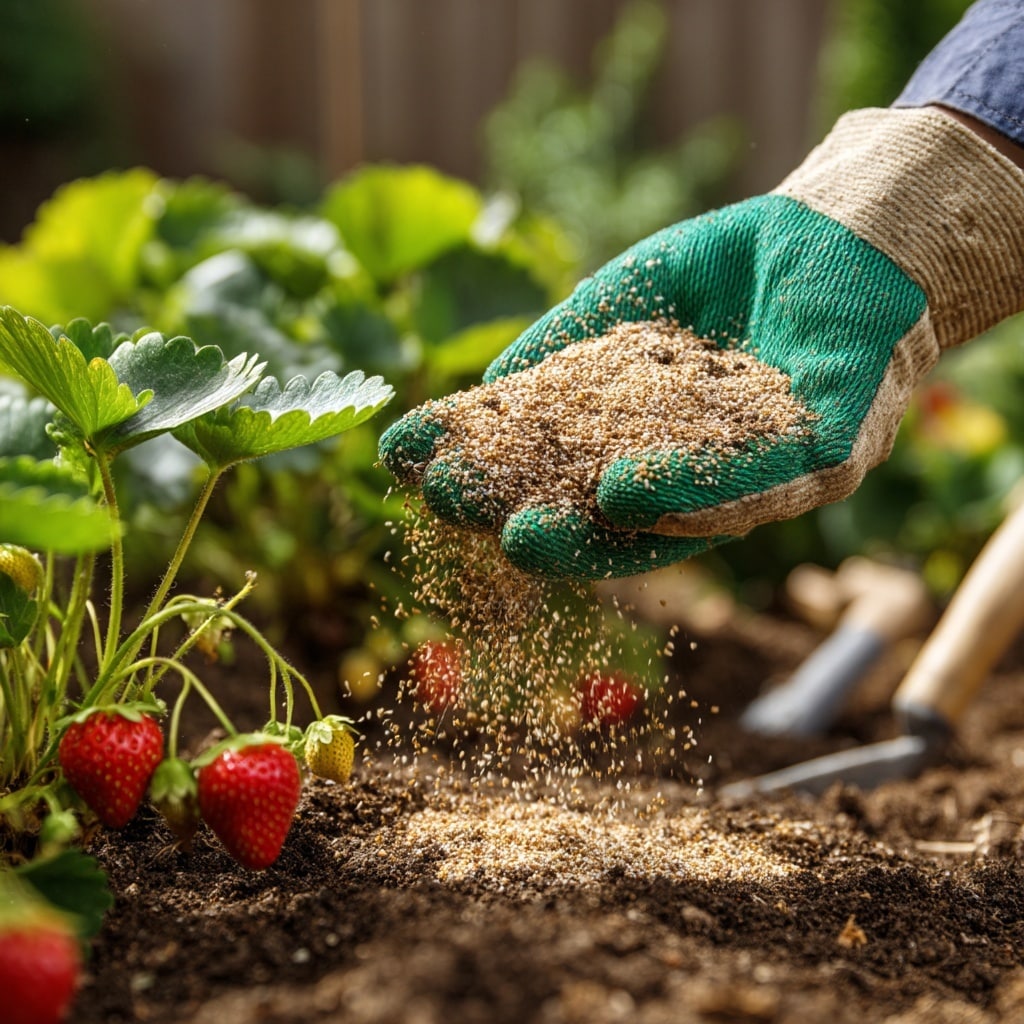Strawberry plant care doesn’t end when summer harvests are over. If you want your strawberries to return healthy and productive next season, winterizing them is essential. Many gardeners assume strawberry plants are hardy enough to survive cold weather on their own, but freezing temperatures, soil heaving, and harsh winds can seriously damage the crowns and reduce fruit production in spring.
Whether you’re growing June-bearing, everbearing, or day-neutral varieties, protecting your strawberry plant through the winter ensures it wakes up strong, disease-free, and ready to produce a bigger harvest. Proper winter prep doesn’t require a lot of time—but doing it right can make all the difference.
Why Winterize Strawberry Plants?
Even though a strawberry plant can technically survive the winter in many climates—especially in USDA zones 4 and warmer—exposing it to harsh cold without protection is risky. When soil repeatedly freezes and thaws, it can force the plant’s crown upward, leaving roots exposed and vulnerable to damage. In temperatures below 15°F, unprotected plants may not survive at all.
Winter protection isn’t just about survival—it’s also about fruit production. Strawberry buds often form in late summer or early fall for the following season. If those buds are damaged during winter, your plant may survive but yield far fewer berries. That’s why timely winter care is critical: it protects both the plant and next year’s harvest.
When to Winterize Strawberry Plants

Timing is everything when it comes to protecting your strawberry plant for winter. Start preparing after the plants finish fruiting—typically in mid to late summer—by renovating and fertilizing them. But when it comes to adding mulch or covering your plants, patience is key.
Applying mulch too early can trap excess moisture and prevent plants from hardening off properly, leading to rot or increased cold sensitivity. On the flip side, waiting too long could leave your plants exposed to the season’s first hard freeze.
In most regions, the ideal time to mulch is in late November to early December, when daytime temperatures stay in the 20s and the top inch of soil is frozen. In milder climates, mulch when temperatures drop into the 40s and leaves turn brown and floppy. That’s your cue the plant is entering dormancy and ready for protection.
How to Winterize Strawberry Plants
Winterizing a strawberry plant isn’t complicated, but each step plays a key role in helping it survive and thrive when spring returns. Whether you’re growing in garden beds or raised rows, following this three-step method will prepare your plants for the cold months ahead.
Step 1: Renovate

Renovation begins after the final fruiting period—typically in late July through August for most June-bearing varieties. Start by trimming away damaged or diseased leaves, then cut the plants back to about 1½ inches above the crown. If you’re working with a large strawberry patch, a lawnmower set at the right height can speed up the job.
For tightly packed beds, thin out overcrowded runners so each plant is spaced 4 to 6 inches apart. This reduces the risk of disease and ensures good airflow.
If you’re growing everbearing or day-neutral strawberries, skip the aggressive pruning. Instead, just remove dead leaves and clear out weeds that may compete for nutrients.
Step 2: Fertilize

About a month before your expected first frost, apply a slow-release balanced fertilizer—something like a 10-10-10 formula is ideal. This fall feeding gives the plant the nutrients it needs to develop strong roots and healthy buds for spring.
Use around 1 pound of fertilizer per 25 plants, and be sure to follow the instructions on the packaging. Avoid over-fertilizing late in the season, as too much nitrogen can trigger unwanted leaf growth instead of dormancy.
Step 3: Mulch

Keep watering your strawberry plant until the first frost, then prepare to mulch once the plant starts to go dormant. Choose a lightweight, breathable mulch like straw (not hay), pine needles, or salt marsh hay. Avoid dense mulches like wet leaves or grass clippings—they retain moisture and reduce airflow, which can lead to rot.
Apply 3 to 5 inches of mulch loosely over the plants, covering all foliage. Over time, this will settle to about 2–3 inches, which is just right. Mulch insulates the soil, prevents repeated freezing and thawing, and shields the crown from cold injury.
If desired, you can also use frost protection covers, especially in areas prone to sudden temperature drops. Just keep in mind: these may cause plants to wake up early in spring, so be ready to protect them again if a late frost arrives.
How to Winterize Strawberry Plants in Pots

Potted strawberry plant care in winter follows a similar process to in-ground plants but with a few added precautions. Because containers expose roots to cold air on all sides, they freeze faster—and more deeply—than garden beds.
Step 1: Renovate and Fertilize
After the final fruiting cycle, trim back any damaged leaves and remove weeds. Apply a balanced, slow-release fertilizer about a month before the first frost, just like you would with in-ground strawberries.
Step 2: Protect the Container
In mild climates, potted strawberry plants can remain outdoors year-round with a good layer of mulch on top. Apply 6 to 8 inches of straw or pine needles over the crown and soil surface.
In colder zones, it’s best to move pots into a sheltered area—like an unheated garage, basement stairwell, or potting shed—after the plants go dormant. This protects both the crown and the container from cracking due to freeze-thaw cycles.
Wrap the outside of pots with old blankets, burlap, or bubble wrap to further insulate the roots. The goal is to keep the temperature steady without encouraging early growth.
Step 3: Water Sparingly
Once dormant, strawberry plants need very little water—just enough to keep them from drying out. Lightly water once a month through the winter, especially if kept indoors or in dry, cold areas.
How to Winterize Strawberry Plants in Pots

Potted strawberry plant care in winter follows a similar process to in-ground plants but with a few added precautions. Because containers expose roots to cold air on all sides, they freeze faster—and more deeply—than garden beds.
Step 1: Renovate and Fertilize
After the final fruiting cycle, trim back any damaged leaves and remove weeds. Apply a balanced, slow-release fertilizer about a month before the first frost, just like you would with in-ground strawberries.
Step 2: Protect the Container
In mild climates, potted strawberry plants can remain outdoors year-round with a good layer of mulch on top. Apply 6 to 8 inches of straw or pine needles over the crown and soil surface.
In colder zones, it’s best to move pots into a sheltered area—like an unheated garage, basement stairwell, or potting shed—after the plants go dormant. This protects both the crown and the container from cracking due to freeze-thaw cycles.
Wrap the outside of pots with old blankets, burlap, or bubble wrap to further insulate the roots. The goal is to keep the temperature steady without encouraging early growth.
Step 3: Water Sparingly
Once dormant, strawberry plants need very little water—just enough to keep them from drying out. Lightly water once a month through the winter, especially if kept indoors or in dry, cold areas.
Spring Transition Tips
As temperatures warm and your strawberry plant begins to show signs of life, it’s time to gently remove its winter protection. But this process should be handled carefully to avoid exposing the plant to lingering cold snaps.
Remove Mulch Gradually
Once you see green shoots or new leaves emerging, begin pulling mulch away from the crown. Don’t toss it out—use it as a weed barrier between rows or around the base of each plant to help retain soil moisture and suppress weed growth throughout the season.
If you used frost protection covers, take them off on warmer days to prevent overheating, then keep them nearby in case of an unexpected late spring frost. Even a brief dip below freezing can damage tender new buds.
Watch the Weather
Keep an eye on your local frost dates. In many regions, fluctuating spring temperatures can fool plants into breaking dormancy too soon. Be ready to re-cover your strawberry plant temporarily if a cold spell is predicted.
This gentle transition helps ensure a strong, healthy start to the growing season—and increases your chances of enjoying a full, flavorful harvest.
Conclusion
Winter care may feel like an extra chore, but giving your strawberry plant the right attention before the cold sets in can pay off big in the spring. A few simple steps—renovating, fertilizing, and mulching—help your plants survive harsh conditions and come back even stronger. Whether you’re growing strawberries in the ground or in containers, winterizing sets the stage for a healthier, more abundant harvest next season.




